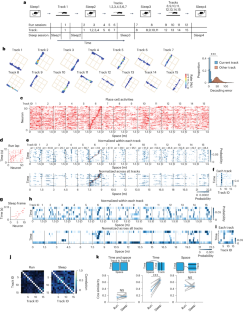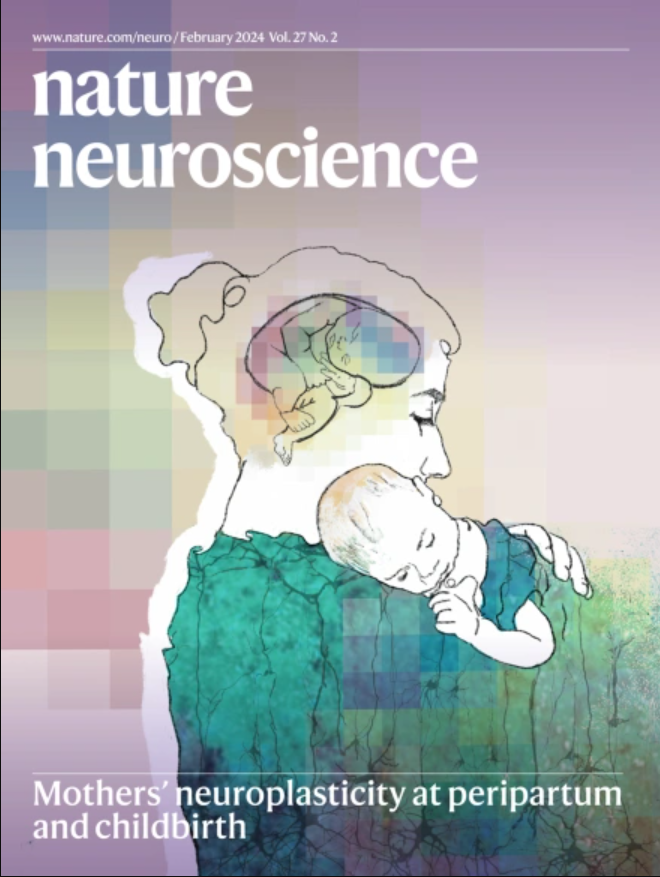睡眠中多重连续经验的嵌套压缩共表征
IF 21.2
1区 医学
Q1 NEUROSCIENCES
引用次数: 0
摘要
动物每天都会遇到并记住多种经历。在睡眠期间,海马神经元组合会重放过去的经历并预放未来的经历。尽管之前的大多数研究调查的是单个经历的重放,但仍不清楚海马是如何在睡眠期间不受干扰地呈现多种经历的。通过监测大鼠在15种不同线性轨迹经历中的海马神经元集合,我们发现了高效的多经历压缩p/重放表征原理。首先,我们发现了序列位置效应,即最早和最近的经历具有最强的表征。其次,在嵌套的 p/replay 事件中,不同的体验以多路复用、闪烁的方式共同呈现,这大大增强了网络的表征能力。第三,在睡眠过程中,空间上连续和不连续的轨迹对被结合成连续的连接表征。最后,在睡眠过程中,跨越一天的多轨道体验序列以超高压缩比进行p/重放。这些编码方案有效地并行、绑定和压缩了多个序列表征,减少了干扰,提高了睡眠时的容量。本文章由计算机程序翻译,如有差异,请以英文原文为准。


Nested compressed co-representations of multiple sequential experiences during sleep
Animals encounter and remember multiple experiences daily. During sleep, hippocampal neuronal ensembles replay past experiences and preplay future ones. Although most previous studies investigated p/replay of a single experience, it remains unclear how the hippocampus represents many experiences without major interference during sleep. By monitoring hippocampal neuronal ensembles as rats encountered 15 distinct linear track experiences, we uncovered principles for efficient multi-experience compressed p/replay representation. First, we found a serial position effect whereby the earliest and the most recent experiences had the strongest representations. Second, distinct experiences were co-represented in a multiplexed, flickering manner during nested p/replay events, which greatly enhanced the network’s representational capacity. Third, spatially contiguous and disjunct track pairs were bound together into contiguous conjunctive representations during sleep. Finally, sequences spanning day-long multi-track experiences were p/replayed at hyper-compressed ratios during sleep. These coding schemes efficiently parallelize, bind and compress multiple sequential representations with reduced interference and enhanced capacity during sleep. Liu et al. unraveled several hippocampal neural ensemble coding schemes that efficiently represent numerous daily experiences during sleep by prioritizing the most recent and earliest events, multiplexing co-representations and compressing day-long sequences.
求助全文
通过发布文献求助,成功后即可免费获取论文全文。
去求助
来源期刊

Nature neuroscience
医学-神经科学
CiteScore
38.60
自引率
1.20%
发文量
212
审稿时长
1 months
期刊介绍:
Nature Neuroscience, a multidisciplinary journal, publishes papers of the utmost quality and significance across all realms of neuroscience. The editors welcome contributions spanning molecular, cellular, systems, and cognitive neuroscience, along with psychophysics, computational modeling, and nervous system disorders. While no area is off-limits, studies offering fundamental insights into nervous system function receive priority.
The journal offers high visibility to both readers and authors, fostering interdisciplinary communication and accessibility to a broad audience. It maintains high standards of copy editing and production, rigorous peer review, rapid publication, and operates independently from academic societies and other vested interests.
In addition to primary research, Nature Neuroscience features news and views, reviews, editorials, commentaries, perspectives, book reviews, and correspondence, aiming to serve as the voice of the global neuroscience community.
 求助内容:
求助内容: 应助结果提醒方式:
应助结果提醒方式:


